Main menu
Common skin conditions

NEWS
Join DermNet PRO
Read more
Quick links
Elastosis — extra information
Introduction Solar elastosis Favre-Racouchot syndrome Linear focal elastosis Elastosis perforans serpiginosa Elastoma Buschke-Ollendorf syndrome
What is elastosis?
Elastosis refers to degenerative changes in the dermal tissue with increased deposition of elastin material.
Elastosis is a prominent feature of several skin conditions. They are distinguished by clinical features and histopathological features seen on skin biopsy.
Solar elastosis
In solar elastosis (also called actinic elastosis), the skin appears skin appears yellow and thickened with bumps or furrowing as a result of sun damage.
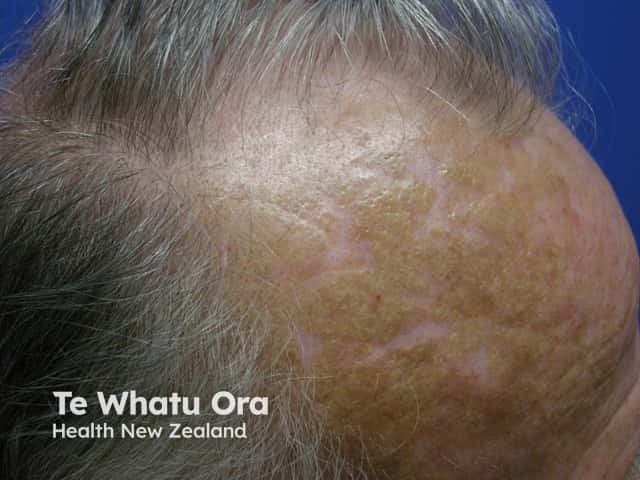
Solar elastosis
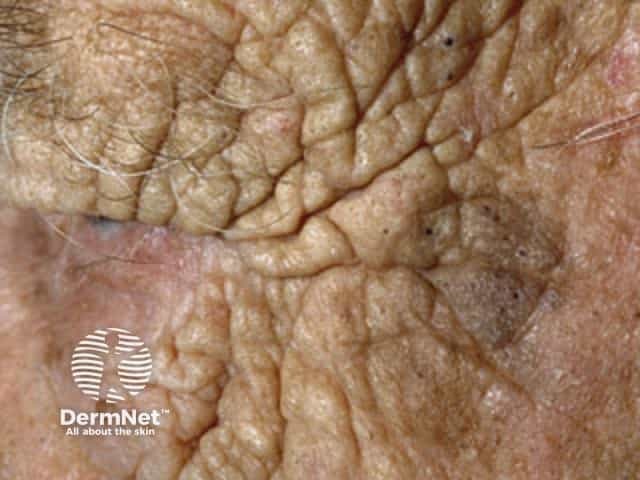
Solar elastosis
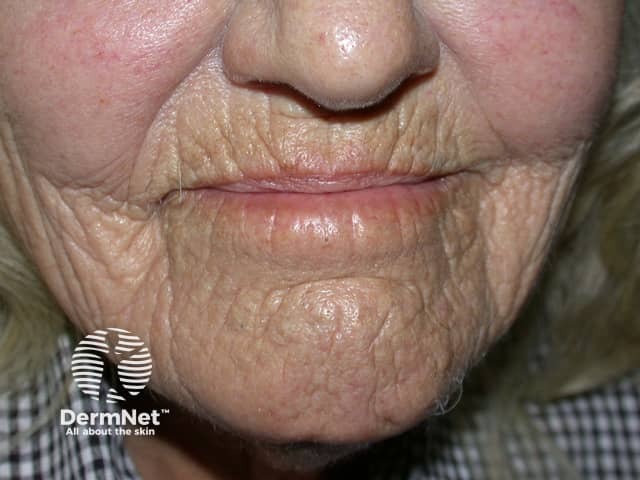
Solar elastosis
Favre-Racouchot syndrome
Favre-Racouchot syndrome is also known as ‘nodular elastosis’. It is characterised by cysts and comedone formation in sun-damaged skin, often prominent under and around the eyes or on the back of the neck.

Favre-Racouchot syndrome

Favre-Racouchot syndrome
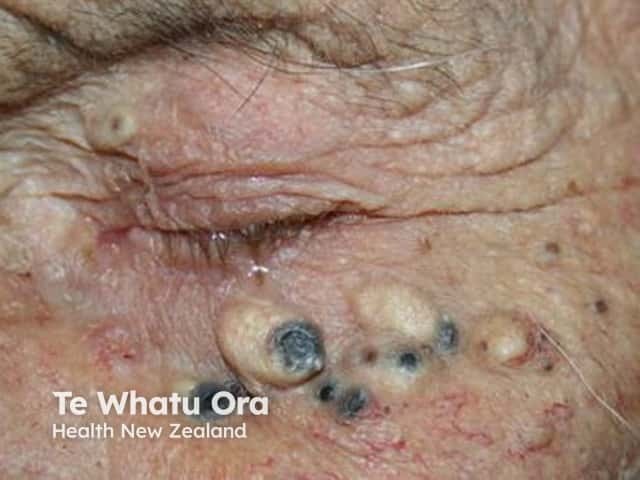
Solar comedones
Linear focal elastosis
Linear focal elastosis is an uncommon dermal elastosis that usually affects the back or trunk but can involve the thighs, arms and breast. It presents as asymptomatic, palpable or atrophic, yellow lines or striae (stretch marks).
Elastosis perforans serpiginosa
Elastosis perforans serpiginosa (EPS) is a rare skin disorder in which abnormal elastic tissue passes from the papillary dermis to the epidermis, appearing as small groups of red bumps often in a snake-like pattern. EPS may be idiopathic, reactive or drug induced.
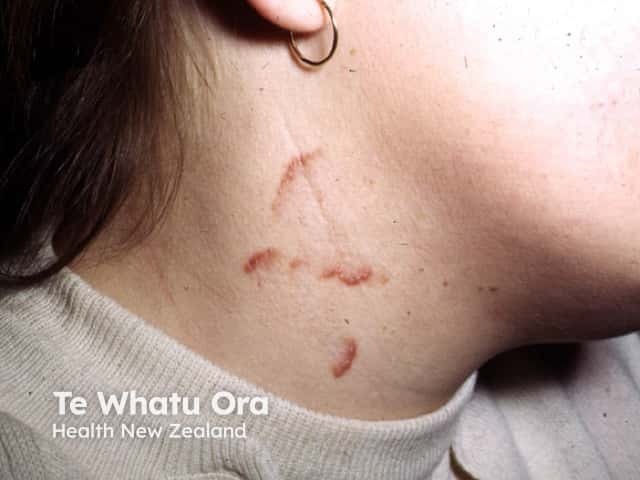
Elastosis perforans serpiginosa
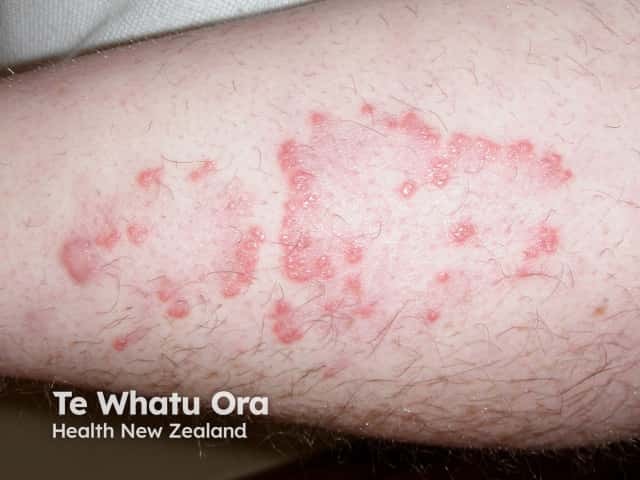
Elastosis perforans serpiginosa
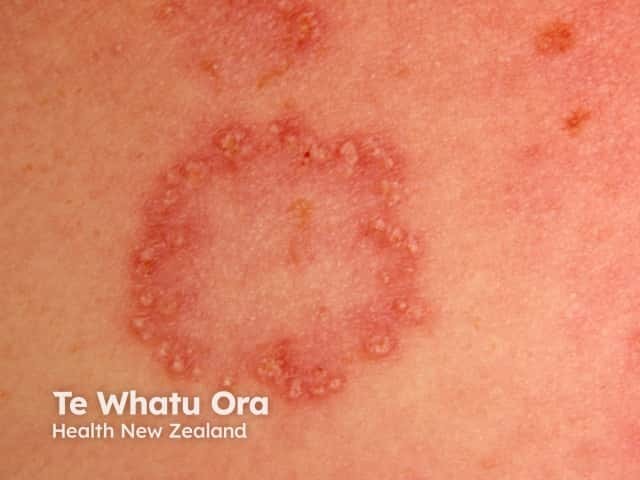
Elastosis perforans serpiginosa
Elastoma
Elastoma is an isolated accumulation of elastin in the dermis. It is a type of connective tissue naevus.
Buschke-Ollendorf syndrome
Buschke-Ollendorf syndrome is a rare, inherited connective tissue disorder associated with multiple elastomas and osteosclerosis.
On DermNet
- Solar elastosis
- Linear focal elastosis
- Elastosis perforans serpiginosa
- Buschke-Ollendorf syndrome
- Solar comedones
- Skin ageing
Other websites
- Favre-Racouchot Syndrome (Nodular Elastosis With Cysts and Comedones) — Medscape Drugs & Diseases
- Aging changes in skin — MedlinePlus
